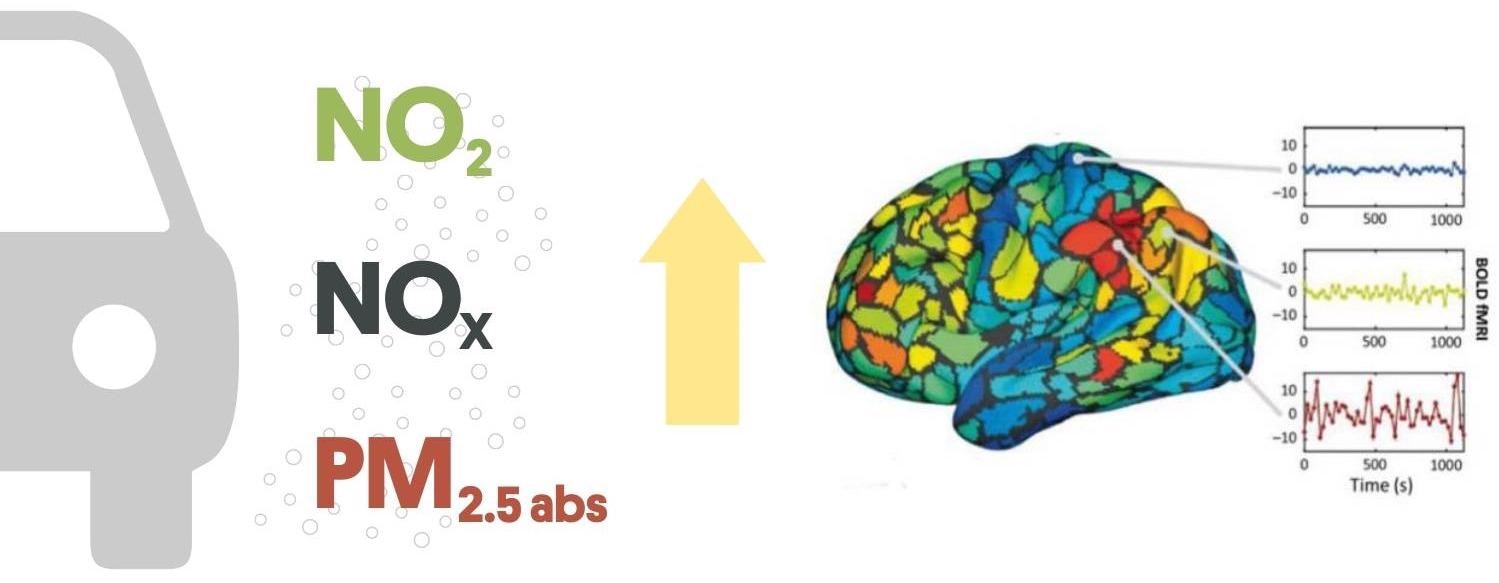The current study is the first to examine the link between exposure to traffic-related air pollution and noise at the time of childhood and pregnancy, and whole-brain connectivity.

Image Credit: Adapted from Perez-Crespo et al.
According to a study headed by ISGlobal, an institution aided by “la Caixa” Foundation, greater exposure to air pollution has been connected to higher functional connectivity amongst various brain regions in preadolescents, while exposure to traffic noise was not.
Also, the outcomes determine the first years of life as the most sensitive period of exposure to air pollution.
Traffic-related noise and air pollution are impacting several people throughout the world.
We already know that children are particularly vulnerable to the effect of these exposures, because of their immature metabolism and developing brain.
Mónica Guxens, Study Senior Author and Researcher, ISGlobal, Barcelona Institute for Global Health
Actually, several studies by Guxens and others have discovered a link between exposure to traffic-related air pollution at the time of early childhood and alterations that happened in the brain structure.
In this study, the research group utilized magnetic resonance imaging (MRI) to explore if higher exposure to noise or air pollution could also be linked to possible changes in brain connectivity (that is, the method in which various brain regions tend to interact).
The use of MRI has opened up new possibilities in epidemiological research for investigating the structure and the functioning of the brain.
Mónica Guxens, Study Senior Author and Researcher, ISGlobal, Barcelona Institute for Global Health
The scientists utilized data from around 2,197 children from the Generation R Study, born between April 2002 and Jan 2006 and living in Rotterdam, the Netherlands. Utilizing land-use models, they evaluated levels of particulate matter (PM) and nitrogen oxides (NOx and NO2) at the participants’ homes at various time periods: at the time of pregnancy, from birth to 3 years, from 3 to 6 years, and from 6 years of age to the age at which the MRI scan was executed.
Noise levels as a result of traffic roads were evaluated using noise maps that are in existence. The participants aged between 9 and 12 years were invited to undergo an MRI scan in the resting state (that is, with no external stimuli).
The outcomes display those greater exposures to NO2 and PM2.5 absorbance (an indication of black carbon particles) from birth to 3 years, and to NOx from 3 to 6 years of age were linked to greater functional brain connectivity amongst various brain regions in the preadolescents.
The associations were determined in brain areas that were involved predominantly in two networks that have powerfully contrary functions: the task-negative (or so-called “default-mode”) network tends to be triggered in resting conditions and the task-positive network tends to be triggered at the time of the tasks that request attention.
We still have to understand the consequences of this increased activity of both networks in resting conditions, but for now we can say that the brain connectivity in children exposed to higher levels of air pollution is different from what we would expect.
Laura Pérez-Crespo, Study First Author, Barcelona Institute for Global Health
The time from birth to 3 years was known as the most vulnerable to air pollution, and black carbon was known as the pollutant that is majorly linked to brain connectivity changes.
As the authors observe, the primary source of black carbon and nitrogen oxide gases present in European cities are nothing but diesel vehicles. Noise exposure caused at home was not linked to alterations in brain connectivity, although various studies show that noise impacts cognitive development in children.
Journal Reference:
Pérez-Crespo, L., et al. (2022) Exposure to traffic-related air pollution and noise during pregnancy and childhood, and functional brain connectivity in preadolescents. Environment International. doi.org/10.1016/j.envint.2022.107275.